If you have ever grown hibiscus, you know that one of the most common problems is leaves that curl up and die. There are several reasons why this happens, but fortunately, there are a few things you can do to prevent it. Here are 8 ways to stop hibiscus leaves from curling:
Causes of Hibiscus Leaves Curling
Hibiscus leaves curling can be caused by a variety of things, including pests, disease, and environmental stressors.
These pests feed on the sap of the plant, causing the leaves to curl and eventually turn yellow or brown. Pests such as aphids, whiteflies, and mealybugs can all cause hibiscus leaves to curl.
Common diseases that affect hibiscus plants include fungal diseases like powdery mildew and botrytis, as well as bacterial diseases like bacterial blight. Disease can also cause hibiscus leaves to curl.
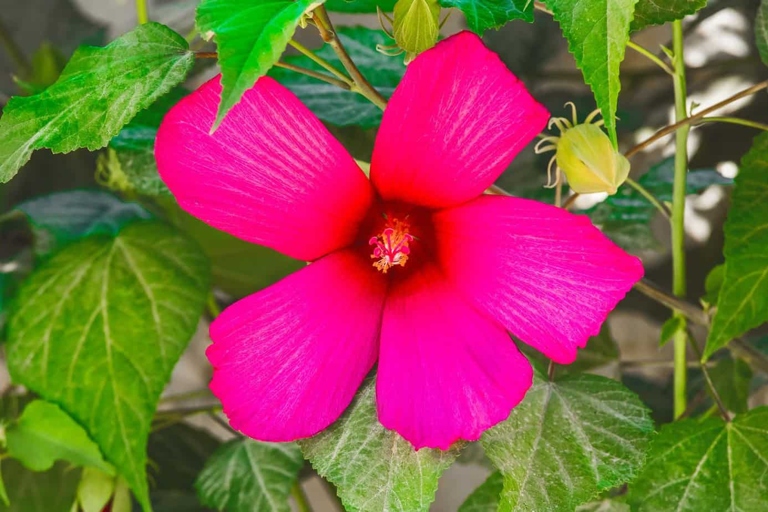
Environmental stressors such as extreme temperatures, too much or too little water, and poor drainage can also cause hibiscus leaves to curl. If the leaves are exposed to direct sunlight for too long, they can also become sunburned, which will cause them to curl.
Improper Watering
If your hibiscus leaves are curling, it’s likely due to improper watering. Over-watering can cause the leaves to curl, while under-watering can cause them to wilt. Both problems can be fixed by adjusting your watering schedule.
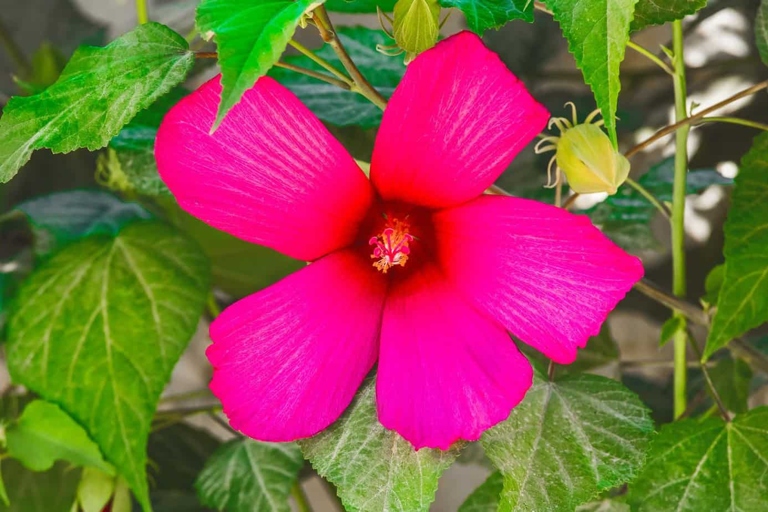
If you’re over-watering your hibiscus, cut back on the amount of water you’re giving it. If you’re under-watering your hibiscus, increase the frequency of your waterings. Let the soil dry out between waterings, and water deeply but less frequently. Water the plant deeply, and make sure the soil stays moist but not soggy.
With proper watering, your hibiscus will thrive. Keep an eye on the leaves, and adjust as needed. With a little trial and error, you can find the perfect watering schedule for your hibiscus.
Solution
If your hibiscus leaves are curling, it could be due to a number of reasons. Here are a few potential solutions:
If the soil is too dry, the leaves will start to curl. Check the soil moisture. Water the plant deeply and regularly. 1.
Check for pests. Aphids, whiteflies, and mealybugs can all cause leaf curl. If you see any pests, treat the plant with an insecticide. 2.
Make sure the plant is in a location with moderate temperatures. 3. If it’s too cold or too hot, the leaves will curl. Check the temperature.
If the plant is getting too much or too little light, the leaves will curl. 4. Move the plant to a location with bright, indirect light. Check the light.

If you’re using too much fertilizer, the leaves will curl. Cut back on the fertilizer, or switch to a slow-release fertilizer. Check the fertilizer. 5.
Consult a professional for help. If you try these solutions and the leaves still curl, it could be a sign of a more serious problem.
Temperature Stess Cause Leaves Curling
There are several possible causes, including temperature stress. Leaves curling is a common problem with hibiscus plants.
When hibiscus plants experience temperature stress, their leaves may curl up in an effort to protect themselves from the cold. This is a natural defense mechanism, but it can be unsightly.
There are several things you can do to help your hibiscus plants deal with temperature stress. They also need well-drained soil, so be sure to water them regularly. First, make sure they are planted in an area that receives plenty of sunlight.
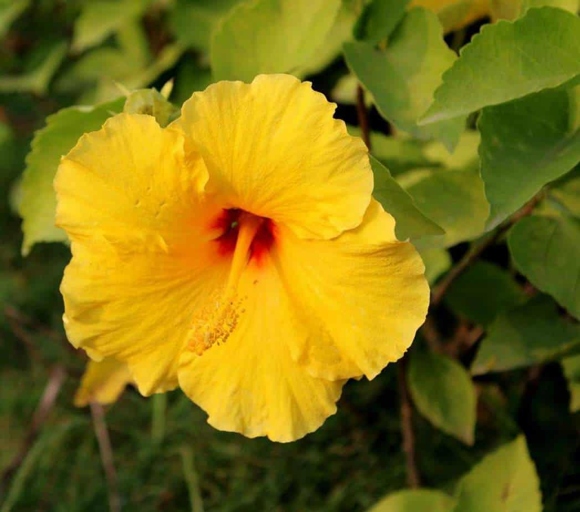
This will help protect them from the cold. If the temperature drops suddenly, you can try covering your hibiscus plants with a sheet or blanket.
With a little care and attention, your hibiscus plants should be able to withstand temperature stress and continue to thrive.
Solution
If your hibiscus leaves are curling, it could be due to a number of reasons. Here are a few potential solutions:
If the soil is too dry, the leaves will start to curl. Check the soil moisture. Hibiscus plants need to be kept moist, but not soggy. 1.
If they are not getting enough light, the leaves will start to curl. Check the light. Hibiscus plants need bright, indirect light. 2.
Hibiscus plants like warm temperatures. 3. Check the temperature. If the temperature is too cold, the leaves will start to curl.
Check the humidity. If the air is too dry, the leaves will start to curl. 4. Hibiscus plants like humid conditions.

Hibiscus plants need to be fertilized regularly. If they are not getting enough nutrients, the leaves will start to curl. Check the fertilizer. 5.
Check for pests. 6. Hibiscus plants are susceptible to pests like aphids and whiteflies. If you see any pests on the leaves, they will need to be treated.
Hibiscus plants can be susceptible to diseases like powdery mildew. Check for diseases. 7. If you see any signs of disease, the plant will need to be treated.
Hibiscus plants can be sensitive to a number of stressors, including changes in temperature, light, or water. Check for other stressors. If you see the leaves curling, it could be due to one of these stressors. 8.
If the leaves continue to curl, you may need to consult with a professional. If you suspect that your hibiscus leaves are curling due to one of these reasons, try to correct the problem.
Sunlight
Hibiscus leaves can curl for a number of reasons, but one of the most common is too much or too little sunlight. If your hibiscus is getting too much sun, the leaves will curl to protect themselves from the harsh rays. If your hibiscus is not getting enough sun, the leaves will also curl in an attempt to get more light.

You should also make sure that you are watering your hibiscus regularly, as too much or too little water can also cause the leaves to curl. To fix this problem, simply move your hibiscus to a spot that gets more or less sunlight, depending on what it needs.
Solution
If your hibiscus leaves are curling, it could be a sign of a nutrient deficiency, pests, or even too much water. Luckily, there are a few things you can do to fix the problem.
This will help to replenish any nutrients that may be lacking in the soil. One solution is to fertilize your plant with a balanced fertilizer. This will help to get rid of any pests that may be causing the leaves to curl. You can also try spraying your plant with a diluted solution of water and dish soap.
This will help the plant to dry out more quickly. If you think that too much water is the problem, try letting the soil dry out a bit before watering again. You can also try moving your plant to a spot that gets more sunlight.
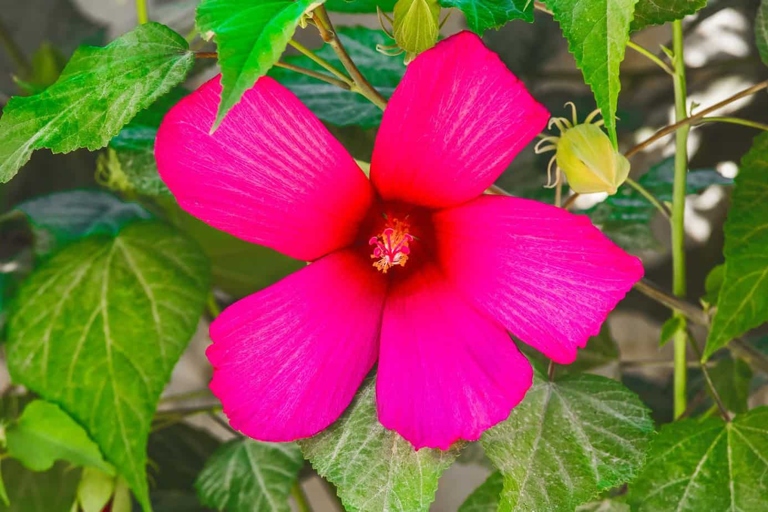
If you’ve tried all of these solutions and the problem persists, it’s best to consult with a professional. They will be able to diagnose the problem and recommend the best course of action.
Soil Acidity
If the soil is too acidic, the leaves of the hibiscus plant will start to curl. The pH of the soil can have a big impact on the health of your plants. Hibiscus plants are especially sensitive to soil pH. Acidic soil is one of the most common problems that gardeners face.
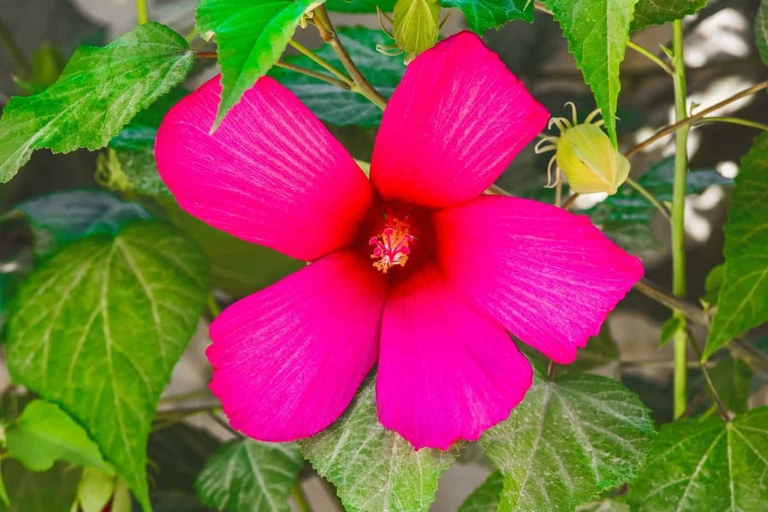
There are a few things that you can do to stop the leaves of your hibiscus plant from curling. You can also add organic matter to your soil to help improve its quality. First, you can test the pH of your soil and adjust it accordingly. Finally, make sure that you are watering your hibiscus plant regularly.
Solution
If your hibiscus leaves are curling, it could be a sign of a nutrient deficiency, pests, or disease. Luckily, there are a few things you can do to solve the problem.
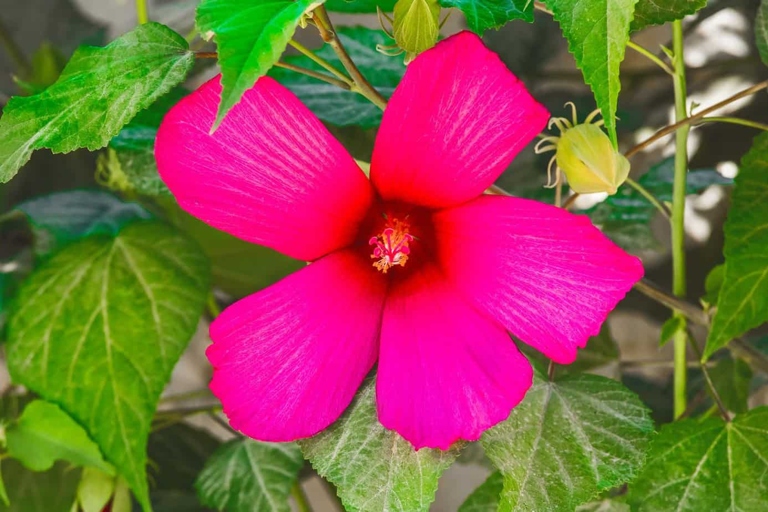
You can also try adding compost or manure to the soil. To start, check the soil to see if it needs more nutrients. If it does, add a fertilizer that is high in nitrogen.
Be sure to follow the directions on the label carefully. If pests are the problem, you may need to use an insecticide.
Again, be sure to follow the directions on the label carefully. If your hibiscus has a disease, you may need to treat it with a fungicide.
If you’re not sure what the problem is, take a sample of the leaves to your local nursery or cooperative extension office. They can help you identify the problem and find a solution.
Nutrients
One is to make sure the plant is getting enough nutrients. Hibiscus plants need at least six hours of direct sunlight each day. Finally, make sure the plant is getting enough sunlight. There are a few things you can do to prevent hibiscus leaves from curling. You can also add compost to the soil to help provide additional nutrients. Hibiscus plants need a lot of nitrogen, so be sure to use a fertilizer that has a high nitrogen content. Another way to prevent curling is to water the plant deeply and regularly. This will help to keep the soil moist and prevent the leaves from drying out.
Solution
You can also try to adjust the amount of light the plant is getting. If the soil is too wet, try to improve drainage by adding sand or perlite. If it is in too little sun, try moving it to a sunnier spot. Finally, make sure the plant is not stressed from too much or too little fertilizer. First, check the soil to make sure it is not too dry. If you have hibiscus leaves that are curling, there are a few things you can do to try to fix the problem. If it is in too much sun, try moving it to a shadier spot. If it is, water the plant and see if that helps. If it is, try adjusting the fertilizer schedule.
Diseases
Hibiscus leaves can curl for a number of reasons, including disease. Here are a few diseases that can cause hibiscus leaves to curl:
The bacteria infects the leaves, causing them to turn yellow and eventually curl up and die. Bacterial Blight: This disease is caused by a bacteria called Pseudomonas syringae. 1.
Fungal diseases: There are a number of fungal diseases that can cause hibiscus leaves to curl, including powdery mildew, leaf spot, and rust. These diseases are often caused by too much moisture, so it’s important to make sure your hibiscus plants are not overwatered. 2.
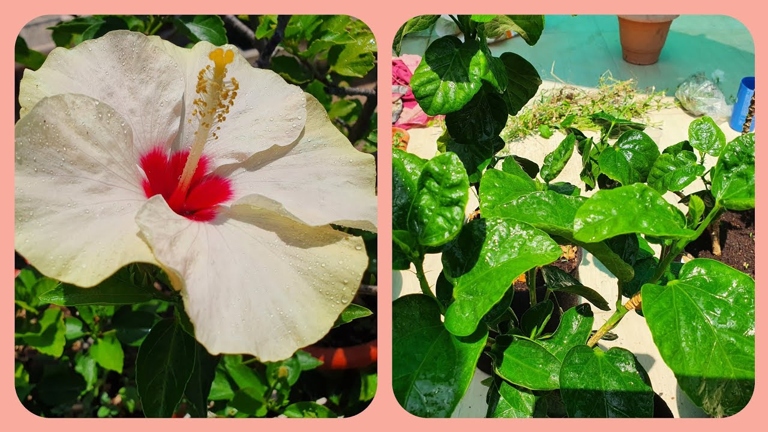
Spider mites: These tiny pests are often the cause of curled hibiscus leaves. 3. They suck the sap out of the leaves, causing them to turn yellow and eventually curl up and die.
If you notice your hibiscus leaves beginning to curl, it’s important to take action immediately. Inspect the plant for signs of disease or pests, and take steps to control the problem.
Solution
The most common culprits are weather, pests, or disease. If you’re noticing your hibiscus leaves curling, it’s likely due to one of several reasons.
For example, if the weather is to blame, you can try moving your hibiscus plant to a more sheltered location. Fortunately, there are a few things you can do to help remedy the situation. If pests are the problem, you can try treating your plant with an insecticide. And if disease is the cause, you can try using a fungicide.

With a little troubleshooting, you should be able to get your hibiscus plant back to good health in no time.
Insect Infestation
If that doesn’t work, you can try using an insecticide. You may also want to try using a horticultural oil to kill the insects. If your hibiscus plant is suffering from an infestation of insects, there are a few things you can do to get rid of them. First, try spraying the plant with a mixture of water and dish soap. Be sure to follow the directions on the insecticide label carefully. If you have a serious infestation, you may need to contact a professional pest control company. This will kill most of the insects on the plant. Again, be sure to follow the directions on the label.
Solution
If your hibiscus leaves are curling, it could be due to a number of reasons. But don’t worry, there are a few solutions that can help.
One solution is to check the plant for pests. To get rid of pests, you can use a pesticide or insecticide. If there are any pests on the plant, they could be causing the leaves to curl.
If the plant is too dry, the leaves will start to curl. Another solution is to make sure the plant is getting enough water. Make sure you’re watering the plant regularly and giving it enough water.
Put the plant in a spot that gets less sun, or provide some shade for the plant. If the plant is getting too much sun, that could also be causing the leaves to curl.

Finally, if the leaves are still curling, you can try using a plant hormone. Plant hormones can help to encourage growth and prevent leaves from curling. You can find plant hormones at your local garden center.
Why do Hibiscus Leaves Curl after Repotting?
To prevent this, be sure to water the plant well before repotting and avoid disturbing the roots too much. When you repot a hibiscus, the roots are disturbed and the plant goes into shock. This can cause the leaves to curl. After repotting, keep the plant in a warm, sunny spot and water regularly to help it recover.
Solution
If your hibiscus leaves are curling, there are a few potential solutions. If the soil is too wet, let the plant drain before watering it again. If the plant is in too little sun, move it to a sunnier spot. Next, check the plant’s soil. With a little troubleshooting, you can get your hibiscus plant back to health in no time! Finally, check the plant’s light exposure. If the plant is in too much sun, move it to a shadier spot. If you see any pests, remove them by hand or with a pesticide. If the soil is too dry, water the plant. First, check the plant for pests.
How to Prevent Hibiscus Leaves Curling?
If your hibiscus leaves are curling, it could be a sign that the plant is stressed. There are a few things you can do to help prevent hibiscus leaves from curling:
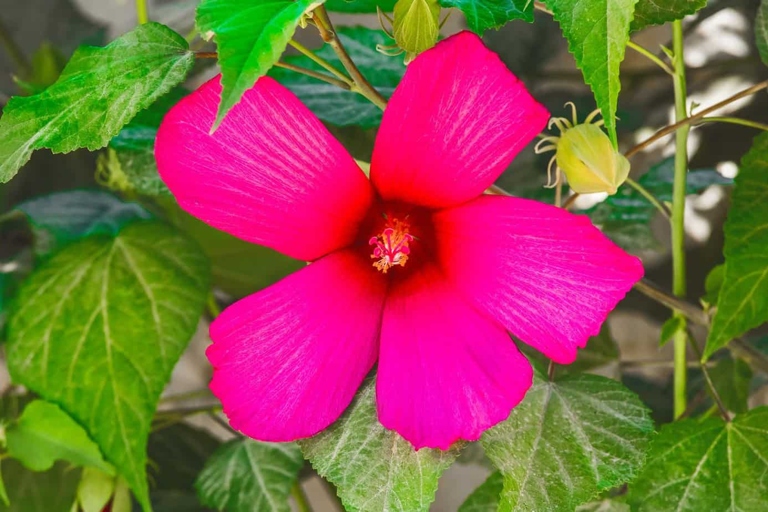
Hibiscus plants like to be kept moist, but not soggy. Make sure the plant is getting enough water. 1. Check the soil before watering and only water when the top inch or so is dry.
Make sure the plant is getting enough light. If your plant is not getting enough light, it may start to curl its leaves as a way to conserve energy. Hibiscus plants need at least six hours of direct sunlight each day. 2.
Avoid using too much fertilizer. Stick to a light fertilizer and only fertilize every few weeks. 3. Over-fertilizing can cause hibiscus leaves to curl.
Protect the plant from extreme temperatures. Hibiscus plants are tropical plants and can be damaged by cold temperatures. 4. If the temperature drops below 50 degrees Fahrenheit, bring the plant indoors or cover it with a frost blanket.
Frequently Asked Questions
1. What is hibiscus?
Hibiscus is a flowering plant that is native to tropical and subtropical regions.
2. What causes hibiscus leaves to curl?
There are a few reasons why hibiscus leaves may curl, including lack of water, too much sun, or pests.
3. How can I prevent hibiscus leaves from curling?
There are a few things you can do to prevent hibiscus leaves from curling, including watering regularly, providing shade, and controlling pests.
4. What happens if hibiscus leaves curl?
If hibiscus leaves curl, they may become yellow or brown, and the plant may become less vigorous.
5. Can I fix hibiscus leaves that are already curled?
If hibiscus leaves are already curled, you can try to improve the growing conditions or remove the affected leaves.
Final thoughts
If your hibiscus leaves are curling, it could be a sign of a nutrient deficiency, pests, or disease. By following the tips in this article, you can help to prevent your hibiscus leaves from curling.
